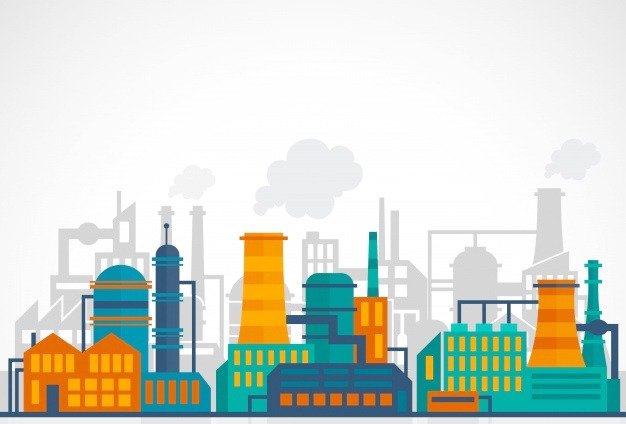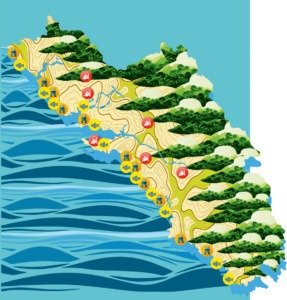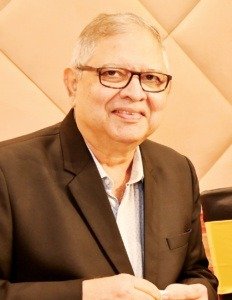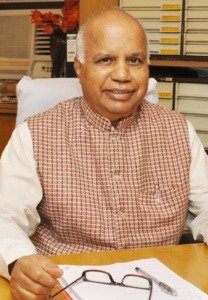
Former President of Goa Chamber of Commerce and Industry, MANGUIRISH PAI RAIKER walks down memory lane to list out the highlights of Goa’s tryst with industry in the post-Liberation era
 Entering the diamond jubilee year since its liberation from Portuguese colonial rule, Goa takes pride in showcasing its industrial progress till date. Taking this opportunity to list and analyse the assets as well as liabilities that have become a part of this region, helps to unfold the industrial history.
Entering the diamond jubilee year since its liberation from Portuguese colonial rule, Goa takes pride in showcasing its industrial progress till date. Taking this opportunity to list and analyse the assets as well as liabilities that have become a part of this region, helps to unfold the industrial history.
Goa was the last territory to join mainstream India, nearly fourteen years after its independence. The stocktaking also becomes pertinent as it provides a graph of the progress made by this region, first as a Union Territory and then a full-fledged State.
Though sixty years may be too small a time in the life of a region, so as to derive its achievements, nonetheless it certainly makes one aware of the direction – right or wrong – in which it is heading.
Last off the Block
A land which was forcefully ruled by the Portuguese for over 450 years, first as its colony and then as an overseas province, was a totally backward and undeveloped region until its liberation from the colonial regime on December 19, 1961, when the Indian Army commenced with ‘Operation Vijay’ resulting in the annexation of Goa, Daman and Diu into the Indian Union.
In the pre-Liberation era, Goa had an agrarian society with almost eighty six percent population dependent on it. Mining had just about begun to take shape and very few got employed in that sector. Goa had neither an industrial set up, nor any avenues for jobs except for traditional skills like carpentry, blacksmith, bakery and seasonal brewing of cashew and coconut feni; and of course, fishing – in the traditional, un-mechanised format, which was one of the principle occupations.
14 years Economic Benefits of Goa Liberation
The Portuguese dominated region provided few opportunities for basic education, and virtually no opportunities for higher education. It had neither industrial set up, nor any avenues for jobs. The life of the common man was at the mercy of the then existing feudal economy mostly toiling in the farms or fields. Breaking free from the shackles of slavery, Goa, which along with Daman and Diu was made into a centrally administered Union Territory of India, needed to stand on its feet, become a self-sustained region and compete with other States of the country that had already achieved independence 14 years earlier. The task became economically far more daunting as Goa had lost out on two Five-Year Plans that had provided the rest of the country a valuable lead in economic growth. However, this smallest region in the country by way of area, took up the gauntlet, and proved its mettle in the next six decades, with successive governments ensuring that the common man – the toddy tapper, the farmer, the fisherman and the coconut plucker among others – was the centre of focus of their governance. The gates, albeit, opened for the growth and development of the region.
Education: Game Changer
The Liberation of Goa took education to the doorsteps of the people, with schools opened in virtually every village, in every taluka. The number of government schools in the primary sector has presently reached 938, while there are 176 government-aided primary schools. In the upper primary category, there are 130 government schools and 291 government-aided schools. A number of higher education colleges imparting education in almost every discipline and a university also came up in the State immediately after Liberation. Thus providing facility to complete graduation studies, post-graduation and research in various faculties, within the State. The government further ensured that every taluka had at least one degree college. Furthermore, professional colleges in engineering, architecture and dentistry were established, while the existing medical and pharmacy colleges were upgraded. Education in Goa took a new turn when the region progressed from being the post-graduate Centre of Bombay University to its very own Goa University, which came into being established in 1985. The circle is complete with the State being now chosen to set up the National Institute of Technology campus as well as IIT-Goa campus. Goa already has a BITS Pilani extension campus.
The newly liberated Goa also made a quick foray into the industrial sector by inviting investments from major companies. The industrialization of the region began with the Birlas setting up Zuari Agro Chemicals, manufacturing chemical fertilizers; besides other prestigious companies like Madras Rubber Factory (MRF) and the then Ciba-Geigy establishing their factories
Industry Beckons
The newly liberated Goa also made a quick foray into the industrial sector by inviting investments from major companies. The industrialisation of the region began with the Birlas setting up Zuari Agro Chemicals, manufacturing chemical fertilizers. Soon after, other prestigious companies like Madras Rubber Factory (MRF) and the then Ciba-Geigy established their factories. Presently, Goa has over 7000 small scale industrial units as well as 150 large and medium scale industries employing over 55,000 people. The State has also developed 20 industrial estates; some of them established at Verna, Kundaim, Corlim, Tivim, Honda, Madkai, Sancoale, attracting leading companies to set up their shops. The farsightedness of the government and special income tax exemption scheme also resulted in attracting pharmaceutical investments in Goa, with over 80 reputed companies in this environment-friendly sector, presently generating a total revenue of over Rs 2,400 crore, and constituting roughly 12 per cent of the total drug production in the country. Nearly seventy percent of the production is exported and thirty percent consumed in the domestic market. Besides these, other sectors including light engineering, machinery manufacturing, food processing, automobile ancillaries, bus body building etc. are also functioning in Goa.
Service Sector & Logistics Hub: The New Horizon
Service industry is also taking shape in Goa, now. The IT industry, which was in a nascent stage so far, has started growing wings as more and more budding entrepreneurs have come forward with innovative ideas and launched their startup ventures with great degree of success. Incubation centres in the State has also helped the establishment and growth of this sector.
Besides this, logistics also started taking shape. Since Goa is blessed with a port, airport, railway and road network, connecting other parts of the country is easier and hence it requires a good strategic planning and implementation for this sector to develop. Logistics has great employment potential and the local population is in tune for these jobs. Warehousing is a big business and has good scope for development in the State.
Marine waterways transport can be developed to connect coastal States like Gujarat, Maharashtra, Karnataka and Goa, facilitating the trade from the hinterlands. This will help ease the pressure on the roads and also save fuel through this cheaper mode of transport. Service industry has great potential for growth.
The Sun & Sand Advantage
Tourism, forming a major backbone of the Goan economy, saw major hotel industry brands like Taj setting up their hospitality projects in the State. Currently, every major resort property brand on the international circuit has its presence in Goa. The number of tourists annually visiting the state has touched upwards of three million, with more than thousand direct charter flights landing in Goa. This facilitates direct entry of tourists from different parts of the world, with Goa being known as one of the leading tourism centres on the international circuit. Tourism, so far, has been developed only along the coastal areas. There is treemendous scope for promoting hinterlands to the visitors thereby also helping local folk art, agri-products and handicrafts to find market.
Art and culture has always been the pride of Goa, and successive governments never once let this fact go out of their sight. Kala Academy, the premier art and culture institution in the State provides a number of platforms to those engaging in performing arts. It also provides training in dance, music and drama to desiring students. The Goa College of Music widened the scope for acquiring knowledge in various facets of music. Goa, which has been blessed by a number of beautiful temples, churches and mosques, received the providential blessing whenever it faced any eventuality, and the situation turned in favour of Goa.
Struggle for Identity
The Opinion Poll fought for the very existence of Goa in 1967, not only ensured that Goa maintained its individual identity, but also helped Goa to evolve as a part of India with a unique culture. When Goa faced yet another threat in the form of language agitation in 1986, the event not only resulted in getting Konkani the status of an Official State Language, but ensured that the region with its own language was declared as the 25th State of the country. In the year 1992, Konkani was included in the VIIIth Schedule of the Indian Constitution.
Lights, Camera, Action
Since 2004, Goa made a mark on the international level by becoming the permanent venue for hosting the prestigious International Film Festival of India. Goa being blessed with natural beauty has inherent strengths too, there are artists, directors, film editors, musicians of national and international repute who can contribute to this industry. This has also helped Goa to be a destination for national and international cinema shootings. Cinema industry as well as producing programs for the smaller screens is gaining a foothold in Goa. This also has given opportunity to start a film city in the State; as well as ancillaries like sound, editing, dubbing studios – enabling ease in the process of film making.
The Road Ahead
Liberation also saw massive improvement in infrastructure such as roads, electricity and water supply; arrival of Konkan Railway in the State; and improvement in a number of sectors including transport, aviation, port, irrigation, fishery, health and finally literacy, which has crossed the 88 percent mark in the State.
The road ahead is long but not difficult. Goa is all set to have a new Regional Plan, a sports city, a film city, a sea-link bridge and an international airport at Mopa, North Goa.
The Government is willing to provide more and more facilities to Goans, so that the life of a common man is no different from that of a rich and influential person.
Six decades later, what appeared like a distant dream on December 19, 1961, has become a pleasant reality. The government and the people together have successfully attained this goal, while preserving the strong, secular fabric of the Goan society.
The stage is set for the State to move on in the next 40 years, and the only way it can go is up, higher up to become number one State in the country and be hailed as a model State. In doing so, it is also expected to meet the aspirations of the next generation and at the same time preserve the fragile ecology, bountiful nature and our charming heritage structures. We need to pass on to the next generation what we inherited from our predecessors, while also planning sustainable development in order to be in sync with the new world order.
—————————————————————————————————————————————

Manguirish Pai Raiker is associated with many associations in Goa, some of which he has led with great success. His way of taking all stakeholders along and treating each one with respect and dignity is the mark of his leadership quality. He was the President of Goa Chamber of Commerce and Industry (2011-13), Chairman of Goa Management Association (2008-10); Green Triangle Society, Ex-NCC Cadets Association, Bharat Scouts and Guides and many more. He has had the privilege of being nominated as the vice chairman of MSSIDC in Maharashtra and endeared himself to the business fraternity in the neighbouring state, as well.
A first generation entrepreneur who committed himself to hard work and with disciplined life style made a mark for himself in the manufacturing sector. He rose to the national level being today a senior managing committee member of both FICCI and ASSOCHAM, which are prestigious industry and trade associations. He also chairs the National MSME Council and the Goa State Council of ASSOCHAM. He seats on several central committees including National Board for MSME and empowerment committee for MSME at RBI. He was awarded National Award for Excellence in Entrepreneurship in 1988 and Manager of the year Award in 2002 besides hosts of awards from various other organisations.
He has served as member of State Sales Tax Advisory Committee, State Labour Advisory Committee, Labour Welfare Board, Sports Authority of Goa, Entertainment Society of Goa and various other boards. He is also associated with sports, educational and cultural organizations and is one of the main promoters of Indian Spastic Society, Goa Chapter and also on the Vice Chairman of India Red Cross Society, Goa Chapter. He is an acclaimed trainer and has unique distinction of being an Indian to conduct training for SAARC academy in Sri Lanka.
He started the first school of agriculture and then a community college (Ramanata Crisna Pai Raikar School Of Agriculture), at Savoi-Verem, which provided opportunity for the Goan youth to gain knowledge of agriculture free of cost.
EODB is a major hurdle which has affected industrial investment in Goa: Ralph de Sousa

Goa attained freedom on 19th December 1961. The initial years went towards stabilisation and aligning with mainstream India.
At a time when the entire country was driven by Nehru’s vision of investments in industries and higher education as an apparatus of development, Goa, through Dayanand Bandodkar’s governance, prioritised human developments through schooling and health.
He did promote certain Industries with the two major Zuari Agro plant coming up in 1970 and MRF in 1971, followed by CIBA Geigy in Corlim, Old Goa. All along, Bandodkar’s focus remained steadfast on human development.
This prescient approach, which persisted right until statehood in 1987, is barely understood and even less acknowledged in the rest of India. Nonetheless, it laid the foundation for the State’s contemporary successes in human development, which underlines its vaunted quality of life.
Things changed rapidly after 2000. The famously idyllic coastline unexpectedly became one of the most highly sought after New Year’s destinations in the world. Goa’s tourism brand soared to global renown, then crashed once again when the State started becoming paralyzed beyond capacity during high season. From 2010, if the government figures are to be believed, the total number of visitors spiked past two million, it has been a madhouse: three million in 2013, four in 2015, five in 2016, and both 2018 and 2019 crossed an eye-watering eight million!
Mining was the most lucrative sector which peaked during 2005-2010, but was badly affected due to mismanagement, both on the Government front and the influx of fly-by-night operators. Mining stopped in 2012 with a trickle over the years and has badly hit the core Goan economy. The Government has done practically nothing to re-start with hollow promises and on paper solutions, which are not practical.
The saving grace for Goan industry came through the pharma sector today, which accounts for almost 12% of India’s pharma exports.
Currently, EODB is a major hurdle which has affected industrial investment in Goa and sustaining current industrial operations. The statutory governance was badly lost with the Late Chief Minister Manohar Parrikar shifting to the Centre and thereafter down with health issues. His successors were unable to sustain the speed of industrial development which is down to a trickle.
Sluggish pace of decision making, projects that take too long to fructify, presence of industrial units that burden the environment, slow generation of local employment, are some of the issues cited that has gone against the State becoming a manufacturing or service hub.
Light engineering, electronics, automobile value chain, food processing, Information Technology, Goa as an education hub are sectors that should be promoted. Goa cannot develop as a manufacturing hub as neither does it have the raw material nor the market. The production has to go out of the State. There is a huge scope for EOU units with the MOPA airport coming up.
The Government (Central) has supported with state-of-the-art infrastructure but it has left to the local Government to promote industrial growth. The Goa Investment Promotion and Faclitation Board is trying its best to attract investments, but it needs support in terms of land allotment, power and other infrastructural facilities.
It is pertinent to note that we are still far away from what was envisaged for Goa in 1961. It is time we look back at the opportunities missed and draw up a ‘Vision for Goan Industrial Sector’ for the next 10 years, considering sustainable industries in terms of economy as well as the environment.
Ralph de Sousa, President, Goa Chamber of Commerce and Industry
Goa should opt for sustainable development: Robert Mendonsa

We congratulate the people of our Goa for not only winning its freedom, 60 years ago, but converting the rich resources of our land to its advantage for posterity.
Mother Nature’s bounty can be experienced all around, the red brown soil for mining, from which evolves a cross country flow of scenic greenery, the beaches for attracting tourism, supported by an excellent airport, with an array of globally aligned hotels and resorts.
In the midst of all of this natural beauty are our numerous industrial zones, that manufacture for varied business segments.
I am an ardent reader of Business Goa, and though sitting in Mumbai at our HQ, I am able to keep abreast of all the latest developments being undertaken by the private sector and Government of Goa.
Let us not rest on our laurels, I hope the warmth of the Goan community and their love for the land and culture, along with the NGOs of Goa, will stay vigilant and ensure that my ‘Home State’ is developed by keeping the Sustainable Developmental Goals of 2050 at the fore and always in mind.
Robert Mendonsa, Chairman and Managing Director, Lawrence & Mayo Group





